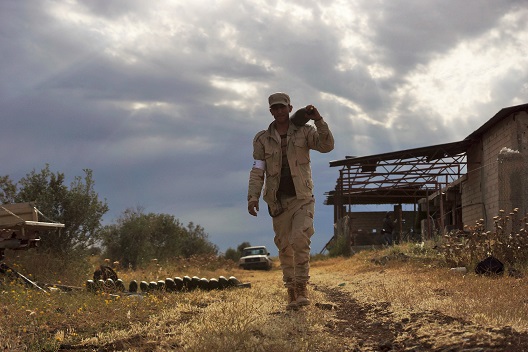 June 9 brought some rare good news from Syria, for both the Syrian insurgency and the country’s future writ large. On June 9, an insurgent offensive led by the rebel Southern Front’s 1st Army, a coalition of nationalist units, overran a major regime position in the southern province of Deraa. Brigade 52 was arguably the regime’s most important base in Deraa, lying less than sixty miles from the capital, Damascus. The rebels are now well placed to advance on Suweida province to the east (and prevent the Islamic State from taking it), threaten the regime’s supply lines to its remaining southern outposts, and eventually attempt to capture Deraa and advance on Damascus.
June 9 brought some rare good news from Syria, for both the Syrian insurgency and the country’s future writ large. On June 9, an insurgent offensive led by the rebel Southern Front’s 1st Army, a coalition of nationalist units, overran a major regime position in the southern province of Deraa. Brigade 52 was arguably the regime’s most important base in Deraa, lying less than sixty miles from the capital, Damascus. The rebels are now well placed to advance on Suweida province to the east (and prevent the Islamic State from taking it), threaten the regime’s supply lines to its remaining southern outposts, and eventually attempt to capture Deraa and advance on Damascus.
To the degree that nationalist groups can dominate the insurgency at the expense of extremists as they have in the south and pressure the regime to reach a political settlement, it is possible to imagine an acceptable end-state to Syria’s civil war. The fall of Brigade 52 makes clear that, among many imperfect US policy options, the best one is not the fledgling, ill-conceived train-and-equip program against the Islamic State (ISIS or ISIL), but doubling-down on support for a coherent and effective southern insurgency, that can compete effectively with extremists and fight effectively against the regime.
The rebel success in Deraa follows a string of other insurgent victories in northern Syria. However, whereas victories in the north were made possible by the participation of groups such as the hardline Islamist Ahrar al-Sham and the jihadist Nusra Front, such groups do not appear to have played a significant role in the Brigade 52 operation. The rebel landscape is different in the south, due largely to a US train-and-equip program that is actually coherent and practical. The US-led ‘Military Operations Command’ (MOC) based in Jordan has streamlined material support and advised insurgent groups so as to limit fragmentation and opportunities for extremists to exploit.
Despite its efficacy however, sources report that the MOC has tended to impose tight constraints on allied insurgent groups, limiting the scope of their missions and achievements. As a result, their gains had been incremental and piecemeal. If Brigade 52’s fall indicates that the MOC and contributing countries (such as Saudi Arabia and Jordan) have decided to loosen these constraints, it is a net gain for the insurgency and the United States and a net loss for the regime and extremist groups. If it has not, however, then the continued growth of ISIS, the hardline tendencies of the northern insurgent coalitions, and the simultaneous weakness and destructiveness of the regime should compel it to do so.
The southern insurgency is far from perfect. It continues to tolerate and at times coordinate its operations with the Nusra Front and it has not coalesced into a unified fighting force under a single command and control structure. At best, the southern insurgency can address only a few of the many elements of Syria’s catastrophe, namely applying military pressure on the regime, protecting populations from regime violence, and limiting the power of extremist groups. There are of course many other critical responsibilities: building good governance, presenting the Syrian people with a viable political and economic plan, addressing the humanitarian crisis, among others.
Militias are not the ideal tool with which to meet these responsibilities of course, but they can help create space for the resumption of civilian activity in liberated territory and coordinate with institutions set up to address the non-military dimensions of determining Syria’s political future. This is already happening on a local level in the south, where insurgent groups and local councils have a functioning relationship. To apply this at a national or even provincial scale, the Syrian opposition will need much more than weapons, ammunition, and tactical guidance. But that does not lessen the urgency of taking full advantage of the southern insurgency’s military potential.
Faysal Itani is a resident fellow with the Atlantic Council’s Rafik Hariri Center for the Middle East.
Image: A Free Syrian Army fighter holds a mortar shell to be fired towards forces loyal to Syria's President Bashar Al-Assad in Deraa countryside May 11, 2015. (Reuters)
